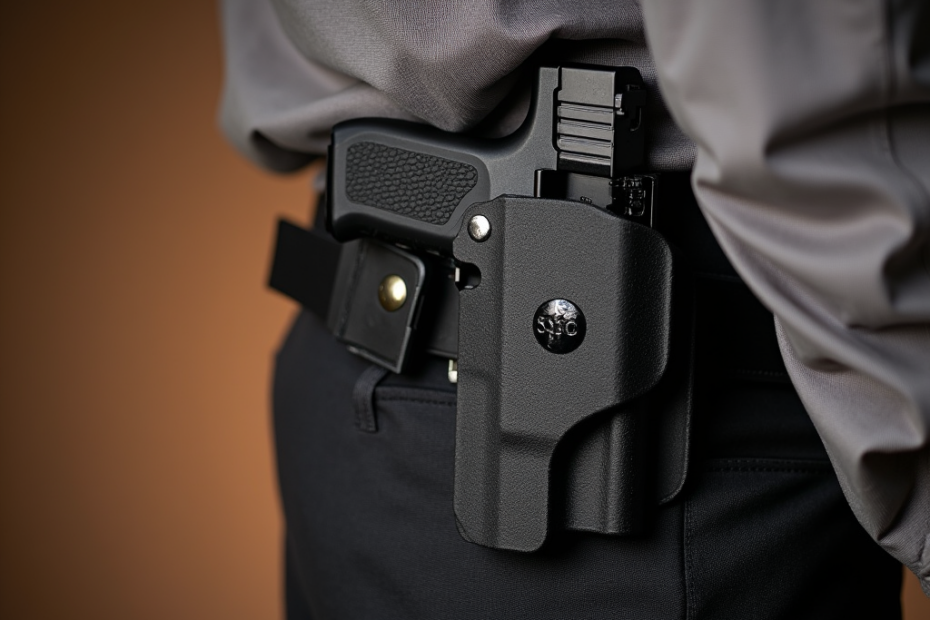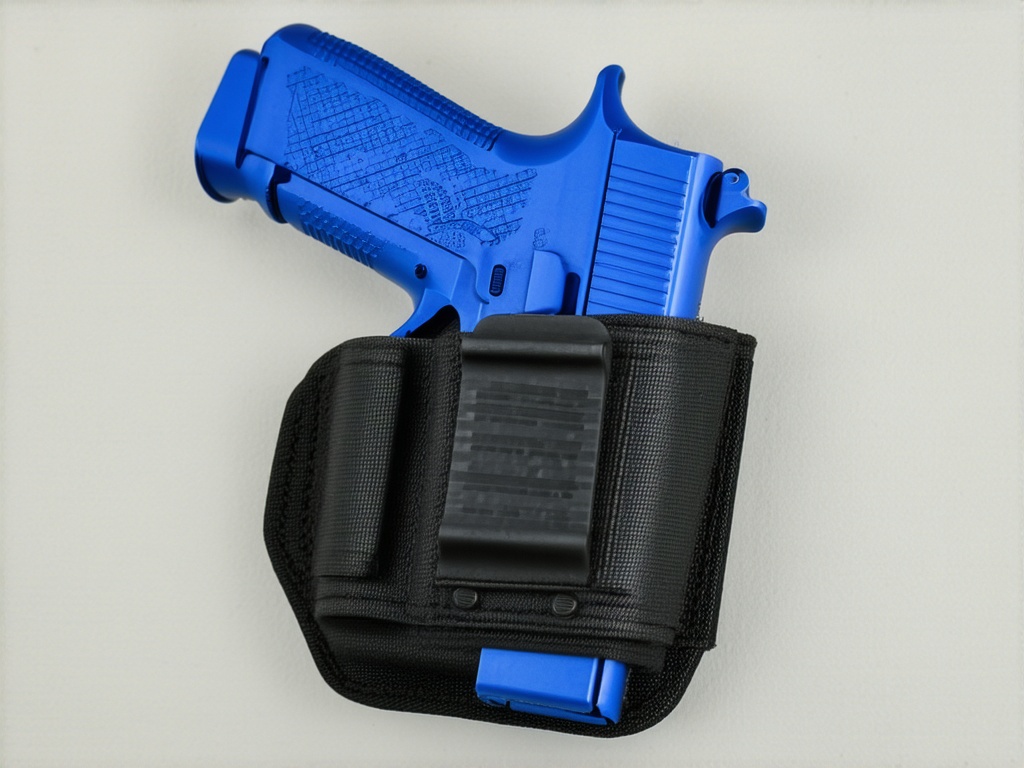Concealed Carry 9mm Holster
Selecting the right Concealed Carry 9mm Holster for your firearm is a crucial decision that impacts both your safety and comfort.
This comprehensive guide will walk you through everything you need to know about choosing, using, and maintaining the perfect holster for your needs.
Types of Concealed Carry Holsters
Inside the Waistband (IWB) The IWB holster remains one of the most popular choices for concealed carry. These holsters tuck inside your waistband, offering excellent concealment while maintaining quick access. The most common positions include appendix carry (AIWB) and strong-side carry at the 3-4 o’clock position.
Outside the Waistband (OWB) OWB holsters provide superior comfort and easier access, though they require more careful consideration for concealment. These holsters work best with longer cover garments and during cooler months when wearing jackets or sweaters is common.
View For Latest Deals
Alternative Carry Methods
- Belly band holsters excel for athletic wear and non-traditional clothing
- Shoulder holsters work well for those who frequently sit or drive
- Ankle holsters provide deep concealment but slower draw times
- Off-body options like concealment bags require extra safety considerations
Materials and Construction
The choice of holster material significantly impacts both performance and longevity. Here’s how common materials compare:
| Material | Benefits | Drawbacks | Best For |
|---|---|---|---|
| Kydex | Rigid, weather-resistant | Can be uncomfortable | Active users |
| Leather | Comfortable, classic | Requires break-in | Traditional carry |
| Hybrid | Versatile, comfortable | More maintenance | Daily carry |
Kydex Benefits Modern Kydex holsters offer durability, water resistance, and consistent draw characteristics. They maintain their shape perfectly and typically feature adjustable retention.
Leather Options Traditional leather holsters provide comfort and aesthetics. They require a break-in period but often become more comfortable over time. Premium leather holsters mold to your body and firearm.
Hybrid Solutions Hybrid holsters combine Kydex shells with leather or neoprene backing, offering the best of both worlds. These holsters excel at all-day comfort while maintaining rigid retention.
View For Latest Deals
Choosing the Right Holster
Concealed Carry 9mm Holster
Body Type Considerations Your physical build plays a crucial role in holster selection. Larger individuals may find more options comfortable, while smaller frames might require more specific solutions for effective concealment.
Clothing Requirements Consider your daily wardrobe:
- Business attire may require tuckable holsters
- Athletic wear needs secure retention systems
- Casual clothing offers the most flexibility
Draw Speed and Accessibility The best holster allows a smooth, consistent draw while maintaining security. Practice your draw stroke regularly with your chosen holster.
Safety and Legal Considerations
Essential Safety Features Every quality concealed carry holster must:
- Completely cover the trigger guard
- Maintain positive retention
- Allow one-handed holstering
- Prevent accidental discharge
Legal Requirements Check your local laws regarding:
- Concealed carry permits
- Printing regulations
- Specific holster requirements
- Training certifications
Maintenance and Care
Regular Maintenance Keep your holster in top condition:
- Clean leather holsters with appropriate leather care products
- Inspect Kydex for cracks or wear
- Check retention screws weekly
- Replace worn components immediately
Popular Brands and Models
Top IWB Choices Leading manufacturers offer excellent options:
- Vedder LightTuck for versatility
- T.Rex Arms Sidecar for appendix carry
- Crossbreed SuperTuck for hybrid comfort
Women-Specific Designs Female carriers have unique needs addressed by:
- Specialized cant angles
- Curved backing plates
- Alternative carry positions
View For Latest Deals
Frequently Asked Questions
What is the most comfortable position for concealed carry? The 4 o’clock position on your strong side typically offers the best balance of comfort and accessibility, though this varies by individual.
How should a concealed carry holster fit? A proper fit includes positive retention, full trigger coverage, and no movement once secured. The holster should allow a smooth draw without snagging.
Can I wear a concealed holster with formal attire? Yes, with proper planning. Tuckable holsters and appropriate positioning make concealment possible with most formal wear.
How do I prevent printing?
- Choose the right holster size
- Adjust cant angle appropriately
- Wear suitable cover garments
- Consider holster position carefully
Final Thoughts
Selecting the right concealed carry holster involves balancing comfort, accessibility, and concealment.
Take time to evaluate your needs, try different options, and practice with your chosen system.
Remember that personal preference plays a significant role, and what works for others may not work for you.
View For Latest Deals
Always follow local laws and regulations regarding concealed carry, and maintain regular training with your chosen holster system.
For more information on holster safety and requirements:
- National Shooting Sports Foundation
- Handgun Law US
- International Defensive Pistol Association


